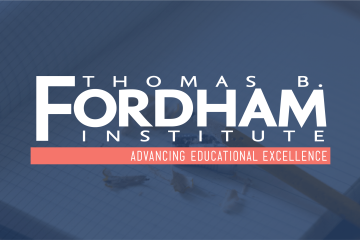Education news is pretty depressing these days. Last week’s feed included articles about cafeteria staffing shortages and supply chain concerns, reporting about declining enrollment, predictions about resignations due to vaccine mandates, findings on teacher stress, reporting about an uptick in student fights, and lots of documentation of demonization in adults’ battles over mask policy. I appreciated how Stephen Sawchuk dove into the existential questions posed by these challenges in his article “What Is the Purpose of School?” It’s a great piece, but when I first read the headline I thought to myself, “gosh, are we here?”
While pouring through bad news, I was shocked at a report that shows most parents in Tennessee are feeling pretty good about this school year. I couldn’t believe it—partly because I’ve heard very real frustrations from many parents and partly because, well, just look at the headlines. Is anyone feeling satisfied in this context?
Then I realized that every parent I talked to last month, across income levels and demographic groups, expressed gratitude for every day that their kids are in school, as well as the sense of purpose and connection that school provides. My own surprise made me wonder if we are losing sight of important parts of the real schooling story. For example, are we missing headlines like “Parents are deeply grateful for school”?
I was also pretty stunned to see that three of the top five emotions high school students feel about school this year are “good,” “excited,” and “happy.” (I was not surprised to see the other two emotions are “stressed” and “bored.”) My team and I have returned to supporting schools in person, and we’ve seen and heard that enthusiasm. Kids are bringing lots of needs to school—no doubt about it—but they’re also bringing eagerness, silliness, joy, inquisitiveness, and longing to grow. I wonder if a fuller view of the story right now would include headlines like “Students are showing up to school eager to learn.”
The teachers and leaders I talked to last week are feeling all of the challenges in the news; their problem-solving muscles are overworked, and the exhaustion is real (exacerbated by some exhaustion over all the talk about exhaustion). Every time I read the news, I worry that the challenges educators are navigating limit the attention and focus they can bring to instruction and that a focus on instruction from those of us who show up to analyze student work or strengthen unit internalization support structures may come off as tone deaf.
But in communities across the country—including school systems we work with in Louisiana that are recovering from devastating hurricane damage—I’ve been inspired by how many leaders have not only said, “we’re on for the walkthrough next week,” but who have also been incredibly eager for conversation. Leaders say things like, “We have to keep up our focus on instruction” and “I want and need this protected time to make sure we are able to support student learning.” The urgent issues are there but so is a longing to keep the most important things in view—a desire to keep the main thing the main thing. Are we missing headlines like “Teachers and instructional leaders continue working hard to support student learning”?
Of course many things can be true; we can have challenges and progress. I’m not suggesting the fatigue and stress and deeper existential questions are not real or worth attention. But I am saying that fatigue and stress and existential questions are not the only things happening.
It can be useful to focus attention on problems, but if the picture is incomplete, we risk missing strategies that leverage our assets. We also risk draining energy without refueling our optimism that we can, in fact, make progress; we have, in fact, already made progress. Finally, when it’s raining bad news, we risk losing sight of which of all the problems we need to keep in sharpest focus.
The problems leaders say are keeping them up at night are drops in student proficiency and increases in inequity. Last week, leaders told me, “I think it will take us five years to get back to 2018 proficiency levels—and we weren’t satisfied with our results in 2018,” and “I just worry we will never see these widened gaps shrink and I am heartsick over what this will mean because nothing has changed about the potential of our students.”
Without being insensitive to the broad range of challenges at play, I am going to try to keep the student learning headlines in focus. Because it matters for students and our country, and because finding ways to move the needle on these challenges now will strengthen education forever.
When I look past the headlines, I do find reasons for hope and signs of progress across states and communities on actions that we know make a difference for student learning and equity. I hear a lot of teachers talking about going deeper on priority content. The curricula available today are more high quality than ever, and many more schools are anchoring to these materials. The attention to the science of reading and effective foundational skills instruction is growing notably. And there is a stronger sense of demand for a broader range of high school course offerings than I have seen in the past.
There is so much more to do. But when we look beyond the headlines, it is not hard to see that a vast coalition is already hard at work and ready to keep advancing the effort.
Editor’s note: This post was adapted from Emily Freitag’s Instruction Partners email newsletter.




